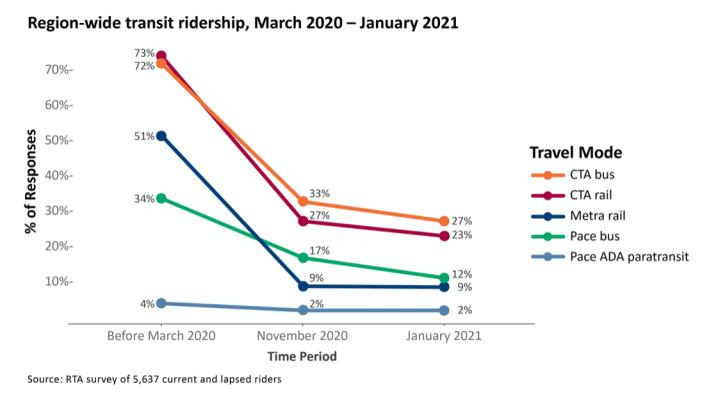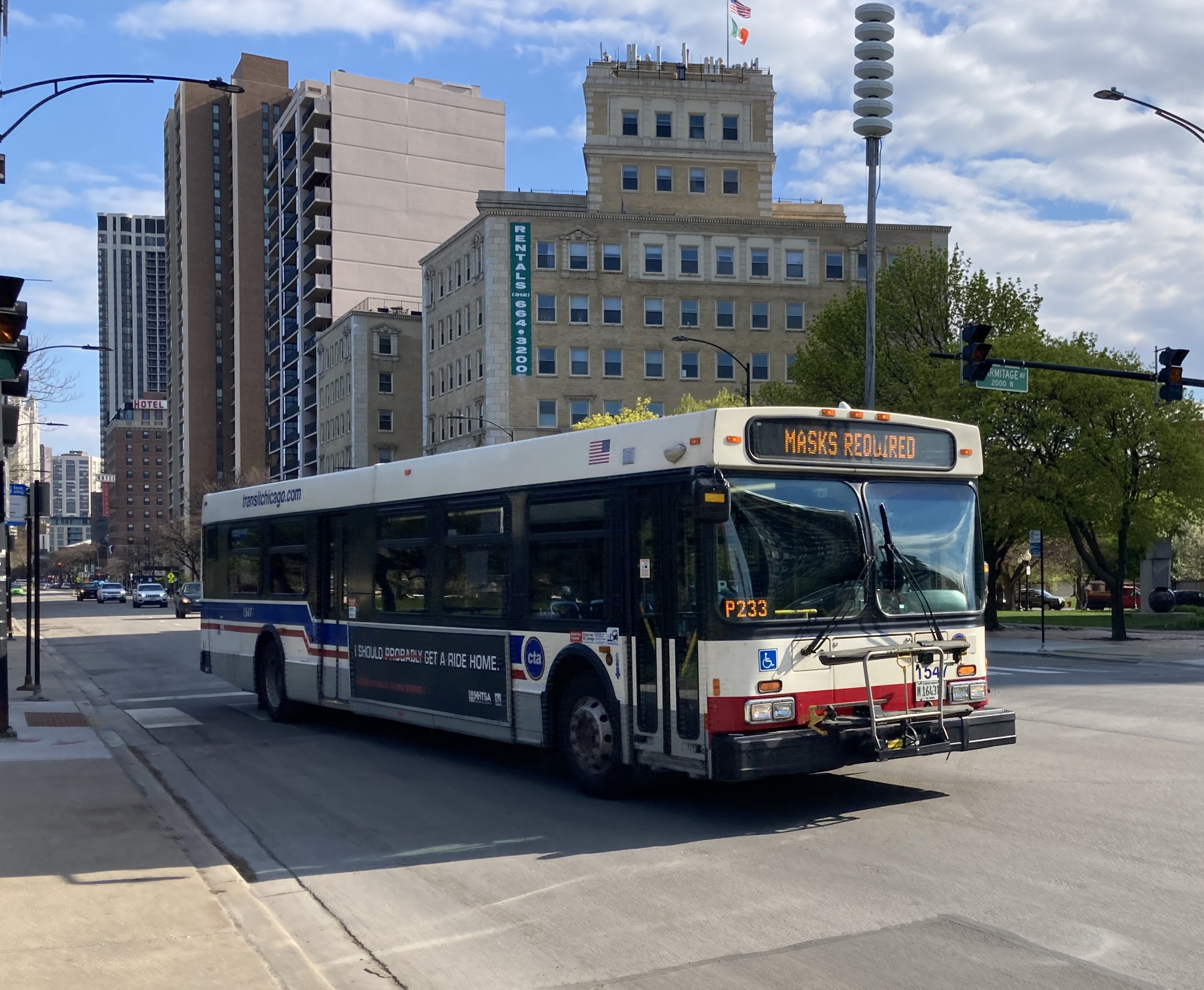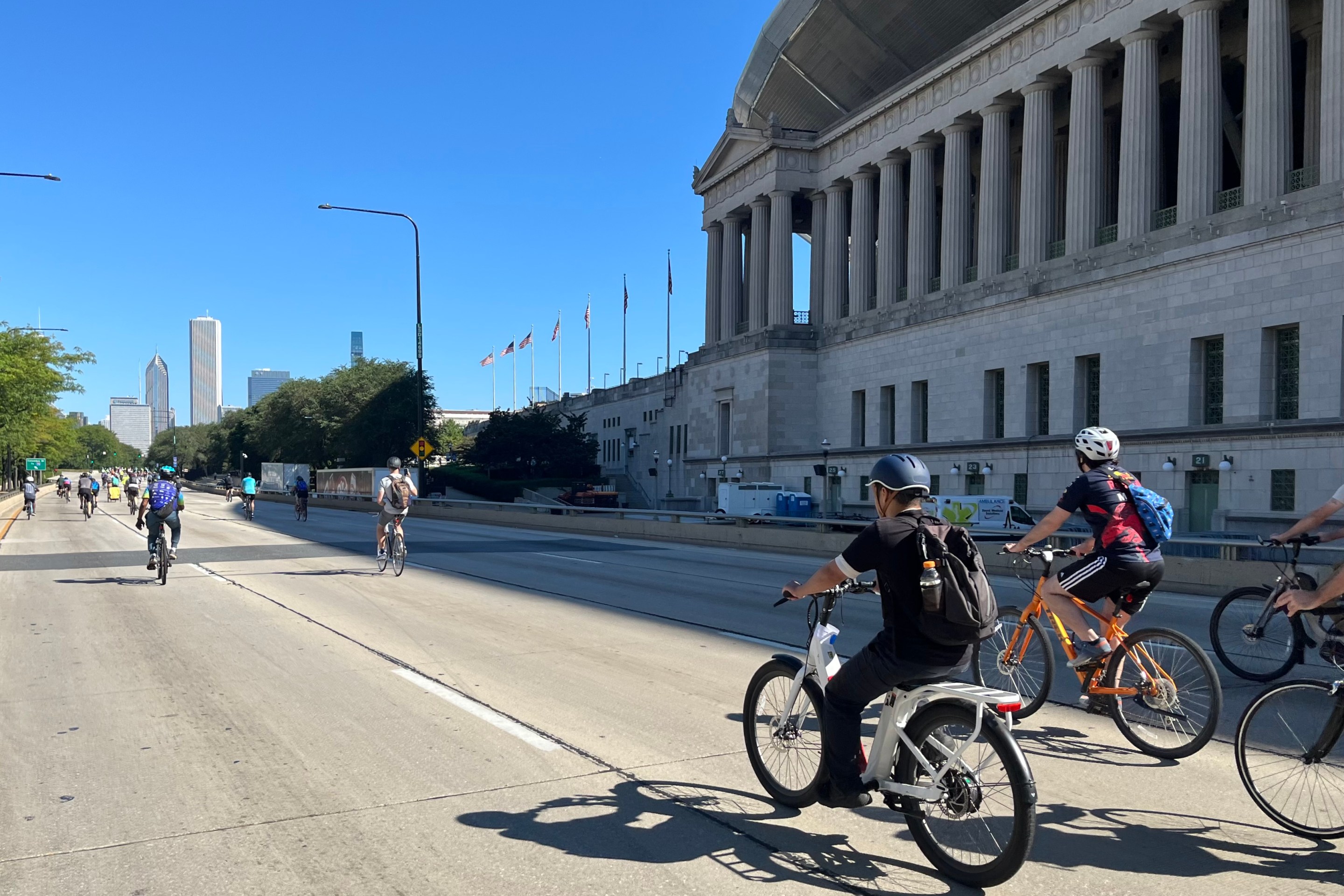Reports of the death of public transportation have been greatly exaggerated. In a widely ridiculed recent column, Chicago Tribune editorial board member and self-described "vaguely libertarian" suburbanite Steve Chapman argued that while just about every other aspect of society will rebound from COVID-19, "Mass transit won’t return to anything resembling its previous passenger use — not sooner and not later."
A new report from the Regional Transportation Authority, based on a survey of 5,637 current and lapsed riders, indicates that naysayers like Chapman are almost certainly wrong. About 80 percent of respondents who weren't riding buses and trains on a frequent basis at the time said they planned to to return to their pre-pandemic commuting habits once worries about the coronavirus ease. However, the continuing trend towards working from home will pose some ridership challenges that may call for innovative responses.
The study, which looked at travel habits, perspectives, and preferences, was conducted in two stages during November 2020, when Illinois was entering a second wave of cases, and January 2021, when vaccines first came on the scene. The survey defined "lapsed riders" as people who were using transit less than once a week at the time, but had used it at least once a week before Stay at Home began in March 2020.
"A majority of current riders on all three systems feel comfortable riding because of the health precautions taken by CTA, Metra, and Pace," said RTA Executive Director Leanne Redden. "These are important insights we can use to help bring back lapsed riders who indicated they still have concerns about riding again that are based on pre-pandemic perceptions. Our challenges are substantial, but we knew they would be. This report is full of information that we and our partners will use to plan for transit's recovery over the long term."
The RTA, CTA, Metra, Pace, and the Chicago Metropolitan Agency for Planning will use this data to transit to inform future planning. Since the early days of COVID, the RTA has updated a COVID Transit Dashboard to keep track of transit trends, including ridership, which was down 71 percent across Chicagoland compared to the pre-coronavirus average.
The survey confirmed what anecdotal evidence indicated was true, that many straphangers stopped riding transit altogether in the time of coronavirus and had not returned by January of this year, and that essential workers, Black and Latino residents, and low-income people were the groups most likely to keep using public transportation during the crisis.

Participants were also asked what improvements could help lure them back to riding transit. They citied faster, more reliable service, and smoother transfers between the CTA, Metra, and Pace as top priorities. If the Biden administration's $2 trillion infrastructure spending proposal, which would more than double federal funding for transit, is passed, better bus and train speed, reliability, and comfort is likely to become a reality.
The survey also found that when people chose other modes instead of transit, driving was the most common alternative. However, it was most common for people to simply not make the trip in question, and respondents said their total number of car trips haven't increased.
The report indicates that people who are riding transit on a regular basis have a more positive impression of the CTA's, Metra's, and Pace's COVID responses than lapsed riders, so the agencies might be able to use that data for "Seeing is believing" marketing to coax recalcitrant riders back to transit. On the other hand, respondents said they wanted to see more efforts to provide healthy and safe conditions on trains, including increased cleaning, and better enforcement of rules and laws on transit in vehicles and at stations.
The RTA, which oversees regional transit funding, is now in in Step 2 of its three-step regional strategy for COVID ridership recovery. In May the agency will launch Step 3 for longer-term strategic planning through 2023 and beyond.
"The survey results foreshadow challenges we'll address in Step 3 of the COVID recovery strategy, including how to prioritize resources," said RTA Director of Planning and Market Development Jessica Hector-Hsu, who lead the team that spearheaded the study. "For example, the survey gave each respondent the choice of a hypothetical investment for improving transit. Most favored investing in speed and reliability, suburb-to-suburb connections, and mobility options coordinated across CTA, Metra, and Pace. Notably, lapsed riders were significantly more focused than current ones on the importance of seamless connections between CTA, Metra, and Pace."
So while getting Chicagoland transit levels back to near-pre-pandemic levels is going to take effort on the part of the agencies, the fact that the vast majority of lapsed riders said they plan to return to buses and trains once they feel safe doing so, suggests that Debbie Downers like the Trib's Steve Chapman are way off base.






